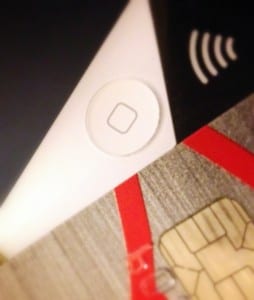Intelligent Transit Fares for ETS and the Region
Yesterday Council accepted the business case for implementing Smart Fare, allocated $7 million toward it, and instructed the Mayor to approach our partners in the region to look at sharing the cost of the municipal portion (another $3 million) and approaching the province to fund the balance of $20 million out of the Green Trip fund. It happened without debate, and with unanimous support, which is extraordinary given the many bumps along the long road to this decision.

Within a couple of years Edmonton and area transit riders should be able to tap and go to pay using contactless debit and credit cards and Near Field Communications (NFC) enabled smart phones.
I have been advocating for Smart Fare since before I joined City Council, as far back as 2006 when I was doing government relations for the undergraduates at the University of Alberta and we were negotiating the initial U-Pass deal. We could see then how much of a difference an intelligent card would make to ease of distribution for ETS and the post-secondary institutions. It’s also easier for riders and speeds up boarding and validation for drivers. It seemed like a no-brainer six years ago.
It took a long time to build awareness of the benefits at City Hall. But this is a great example of how a smart investment in technology can improve efficiency, enhance the customer’s experience, and reduce the burden on the taxpayer.
In parallel to Council’s work, the Capital Region Board’s Regional Transit Committee (which I happen to chair) has been Iooking at a regional fare strategy. While we haven’t settled on a model for the whole region yet, there is a high level of consensus that intelligent fare technology is necessary to make travel seamless across the region and to make real-time data available to sort out cost and revenue allocations among the system operators.
Having this technology is going to provide phenomenal business intelligence for each transit operator, which will help adjust service planning based on real usage. It will settle questions like those raised in the most recent U-Pass negotiations. It will allow for more dynamic pricing, like off-peak discounts, and zone fares if there is a will to go that route.
Perhaps most importantly, it will reduce costs and open up the opportunity to increase revenue to cover the costs of providing transit services. The revenue comes from making it more convenient for casual users tap and to hop on, by providing pricing to get people to use up more of the available capacity off peak, and by streamlining fare checking which we expect will reduce fare evasion. The full business case is here.
The one upside of this taking so long is that the technology has advanced so rapidly that while other Canadian cities have implemented card-based closed systems, we are going to implement an account-based “open payments” system which will allow people to tap and go with contactless debit and credit cards, and even from some smartphones.
Leveraging mass market readers and already-issued cards reduces cost and increases the versatility of the system, potentially in ways that can further reduce cost for the City. Those opportunities will be explored through the next stage of procurement and I am more confident than ever that we will have the most advanced transit fare system in Canada within a couple of years.
Someone asked “How will this work for users” on Facebook and I posted the following, which I’m cross posting here since I should have mentioned it: It will mean not having to stand in line for bus passes or tickets. You’ll be able to register a smart card or NFC-enabled smart phone to your ETS account and tap it to the reader to pay. You’ll still be able to buy a pass but you’ll be able to do it on-line and it will simply attach the pass privileges to your bank card or visa. If you don’t have the right kind of card or phone you’ll be able to get a card from ETS that does all the same things but you’ll have to charge it up with money somehow. If you loose your card it can be deactivated and replaced because it’s an account-based rather than card-based system.